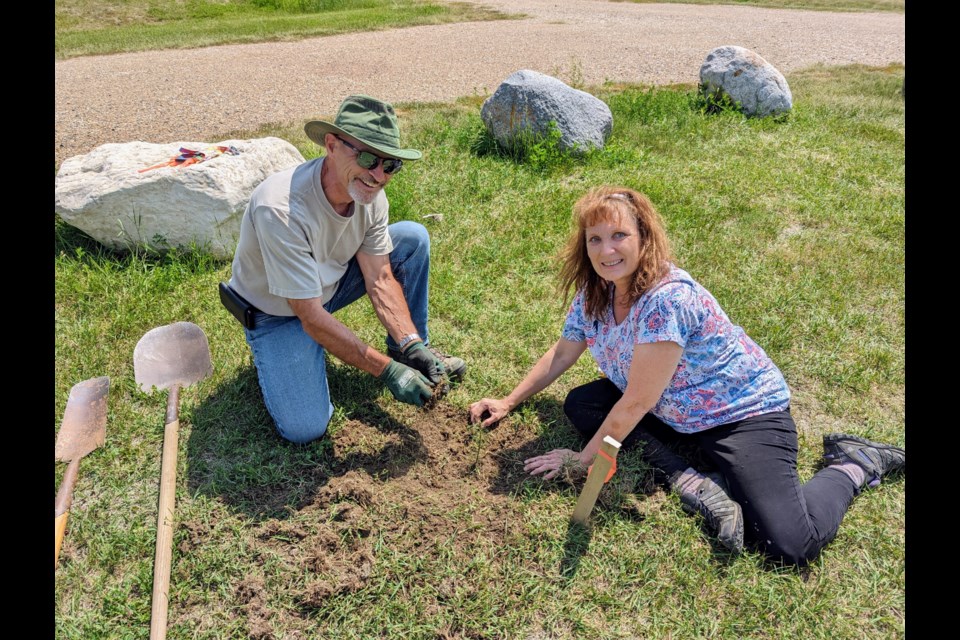MOOSE JAW — A volunteer tree-planting event saw a group of community members finding new homes for spruce, willow, and poplar saplings at three different locations within the park on June 11, helping to restore storm-, winter-, and construction-damaged areas.
“We were a small army, but we managed to get the job done. They worked really hard,” said Donna MacQuarrie-Bye, general manager of the Wakamow Valley Authority (WVA). “I enjoyed myself! It was good to get out, and it’s always good to contribute to the environment. Five hands is just as good as 10 hands, so I consider this a successful event.”
Nearly 200 trees were donated to the WVA by the South Hill Community Association, South Saskatchewan Wildlife Association, and the City of Moose Jaw.
Volunteers began planting at the Kiwanis River Pavilion, putting dozens of spruce saplings in the ground around the structure, playground, and boat launch there. Each baby tree was marked with a red-ribboned stake to ensure park staff see the trees while mowing and can get to them for watering, fertilizing, and mulching.
“My grandpa said he needed some help with planting today, so I decided to come and help,” said Harrison Pethick, a 14-year-old Lyndale School student who came along with his grandfather Lloyd. “It’s fun planting trees. It’s relaxing.”
“The biggest thing we need to do when planting these young trees is to get the grass cut out,” said Brandon Cochrane. Cochrane is vice-president of the South Hill Community Association and helped organize the volunteers. “You have to dig deep enough, cut out the roots from the grass and get the tree some space to grow. And afterwards, they’ll be mulched.”
Volunteers then moved to the Kinsmen-Wellesley Park section of Wakamow and placed many more trees around the playground structure and field there. Picks, mattocks, shovels, spades, and bare hands carved out space for the saplings in the dry ground, with MacQuarrie-Bye deciding the placements.
More trees mean more shade, healthier soil, improved water retention and drainage, and less erosion from rain and spring melts in the park, keeping it green and flourishing for residents and visitors.
The final area was the start of the Wakamow Valley disc golf course on Wellesley Street, where construction last year flattened a broad area and left the soil bare and cracked. Disc golfers rolled their caddies from hole to hole and watched as volunteers worked hard to revitalize the space.
“A big thank you to our volunteers, we love having people come out to help us maintain the park, and I’d like to say a big thank you to South Hill Community Association for their donation and their hands, and the South Saskatchewan Wildlife Association for their donation of trees as well,” MacQuarrie-Bye said.
“Without them we couldn’t have this project running.”
MacQuarrie-Bye hopes to make the community planting a yearly spring event, so keep an eye out for the next opportunity to help improve the park.




